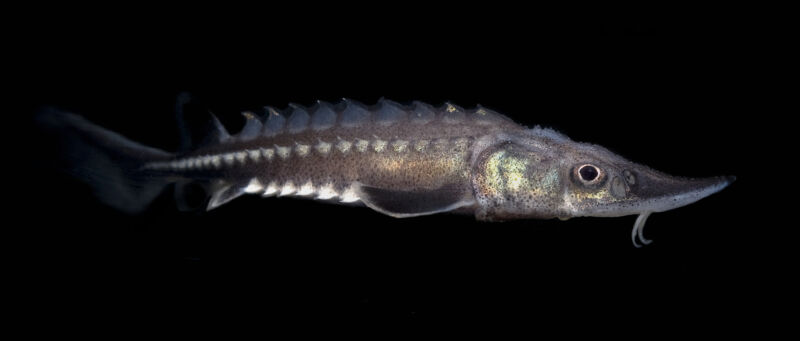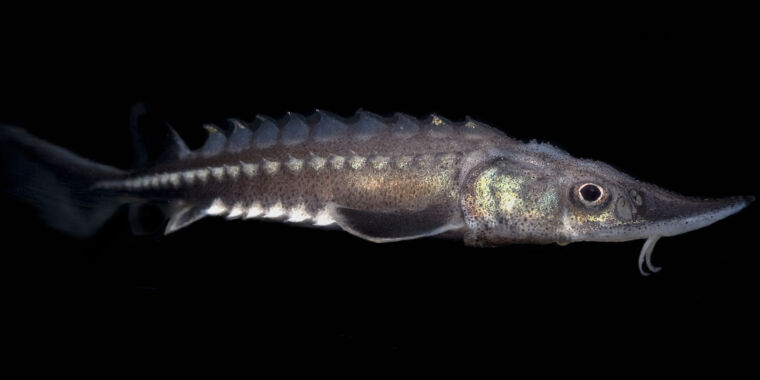
Our skeleton is kind of strange. Most of it forms from the same tissue that makes things like our muscle and connective tissue. The exception is a big chunk of our face, like the jaws and nasal passages. Those come from a tissue that migrates out of the developing nervous system.
Having two different sources of the same tissue is unusual; I can’t personally think of a second example of that happening in vertebrates. So it raises questions about why the system evolved in the first place. Now, researchers have provided a hint as to how this might have come about. It turns out that in early branches of the fish family tree, like the sturgeon, the neural crest forms the bony armor that covers them, suggesting an ancient role in bone formation that goes back to the armored fish of the Devonian.
Doing it all
The tissue at the center of the new work is called the neural crest. As its name implies, it starts off at the very top of the developing spinal cord and hindbrain. Shortly after the developing nervous system closes off into a tube, the neural crest cells leave it behind. Some of them retain their neural identity and go on to form most of the body’s sensory nerves, as well as the nerves that manage the digestive system.
But others utterly transform and go on to do all sorts of strange things. The neural crest underlies everything from the pigment in your skin and hair to the valves in your heart. And, as mentioned above, neural crest cells form much of the facial skeleton.
The question behind the new work focused on the fact that bone formation appears to be limited to just one end of the spinal cord. None of the neural crest throughout the body of mammals goes on to form bone.
This could mean that bone formation is a specialization from a small population of the neural crest. Or it could mean the entire neural crest population is capable of creating bone, but it’s only activated in a small subset in most modern vertebrate lineages. Figuring out which of these is true can tell us something about the origin of bone formation, which is difficult to infer from the fossil record.
To do so, the researchers relied on lineages that branched off from fish early in their history, like the gar, which has heavily armored scales and belongs to a lineage that originated in the Jurassic. Or the sturgeon, which has an origin of similar age and lacks scales but has a body covered in bony plates. The question the researchers were interested in was whether the neural crest contributed to the armor formation in these tissues.

